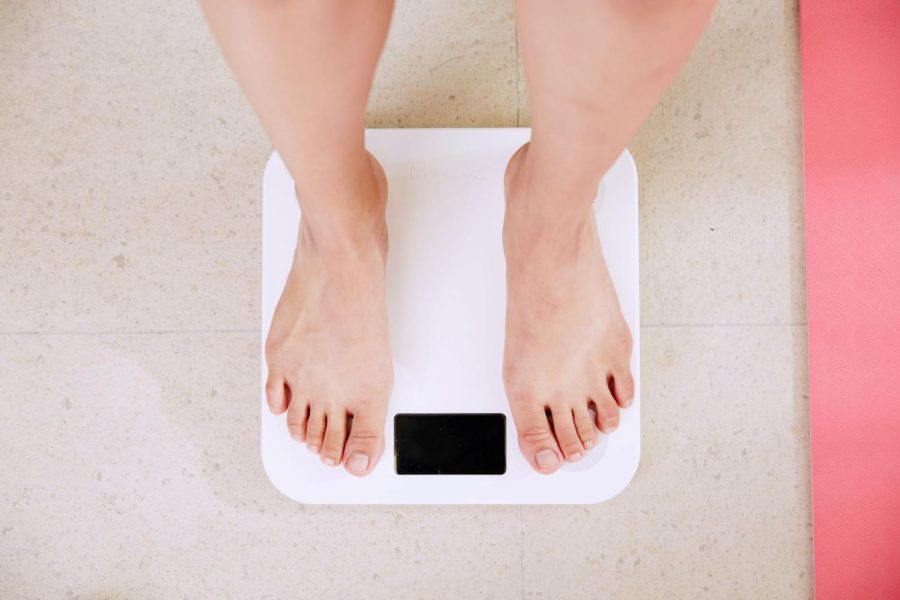Physicians and body positivity advocates consider the impacts of new childhood obesity treatment guidelines
Some say the recommendations will help create effective treatment plans, but others worry they are too aggressive and may worsen obesity stigma.

New guidance regarding pediatric obesity and its lasting effects on mental and physical health could have an impact on the quality of life of children across the country.
On Jan. 9, the American Academy of Pediatrics, or AAP, released its first set of comprehensive guidance in 15 years, recommending that childhood obesity be treated and observed in children as young as 2 years old. The new guidelines also stated that if intensive behavior treatment and lifestyle changes fail to deliver results, children with severe obesity aged 13 and older should be evaluated for bariatric and metabolic surgeries. Further, the AAP’s guidelines encouraged physicians to offer weight loss medicines to overweight children aged 12 and older, in addition to behavioral and lifestyle treatments.
These guidelines include data collected from studies conducted for over a decade and assert that obesity is one of the most common chronic pediatric diseases. The importance of recognizing obesity as a disease could have a lasting impact on how the guidelines are viewed, experts say.
“Obesity is a disease, and it’s rooted in biology, not in behaviors,” said Justin Ryder, an associate professor of surgery and pediatrics at Northwestern University’s Feinberg School of Medicine. “Sometimes that biology can influence behaviors, but the biology and genetics dictate the disease itself from that vantage point, and if we’re going to treat a disease, real diseases deserve real treatments, and you have to treat the underlying biology or pathophysiology that is causing the disease to manifest.”
Ryder, also the vice chair of research for the Department of Surgery at Lurie Children’s Hospital of Chicago, added that children with obesity are just as high risk as adults.
Ultimately, the AAP states that these guidelines apply to overweight and obese children – those who have a body mass index, or BMI, above the 95th percentile. They highlight the importance and benefits of health behavior and lifestyle changes for obesity but make it clear that in some cases, this kind of medical care is not enough, and it is important to view them independently.
“Losing weight is an incredibly challenging task, and there is a fair amount of evidence indicating that prevention is the most important aspect,” said Lindsey Locks, an associate professor in the department of health sciences at Boston University’s Sargent College. “Intervening in children and adolescents is particularly important because it is physiologically much easier.”
One of the few interventions that has had consistent success, she said, is bariatric surgery, especially when lifestyle and health behavior changes do not work. Locks stated that this is why the guidelines though aggressive, make sense and will likely be effective in helping younger patients.
Similarly, Ryder explained that while there are some downsides or risks to surgery as a treatment for obesity, such is the case for most surgical procedures. He said that overall, the procedures are considered safe and can have remarkable results for both weight loss and diabetes remission.
When exploring these options, it is important to consider that these new guidelines are a hub for resources that already exist, experts caution. The AAP was not responsible for approving the surgeries or suggested medications mentioned in the document — – they are simply sharing information and providing evidence-based guidelines that include previously approved measures.
“The AAP is just trying to give [healthcare] providers a full, comprehensive resource so that when they’re trying to treat their patients, they can go to one site and say, ‘Okay, this is what is already out there. They’ve only included the best information out there, so patients can choose to take or not take the medications,” said Lauren Raine, a research assistant at Northeastern University’s Center for Cognitive and Brain Health.
Raine believes the guidelines do a good job of naming the risks and serve as an effective starting point for parents and physicians when thinking about treatment plans.
Specifically, the AAP guidelines consider a variety of clinical studies in providing information about potential medications that can help aid overweight children. The document covers six FDA-approved medications for adolescents, and each have unique outcomes, intended audiences and levels of accessibility.
Some of these medications include once-weekly injectables, like semaglutide, known as the popular Wegovy drug, which studies have shown can lead to a mean weight loss of about 15%. Medications like this one cannot be prescribed to children until the patient is thoroughly evaluated and given prescriptions; however, others, like Orlistat, are sold as an over-the-counter pill at most pharmacies or even grocery stores, but lack the same effectiveness as the prescribed options and often come with gastrointestinal side effects.
Although every drug has its risks, these medications are not considered dangerous for children, experts say.
“These drugs would not be FDA approved if they were not safe,” said Ryder, explaining that they work on the underlying biology of the patient by helping them feel more satiated and giving them the tools that they need to be successful to help them deal with their excess weight.
Since their release, however, the AAP’s guidelines have faced severe criticism and backlash for possibly fueling stigma and promoting disordered behaviors. Critics argue that not only are these recommendations detrimental in fostering positive body image for children, but that they lack consideration of important factors that play into child obesity – such as demographics.
“The AAP’s guidance is an extension of white supremacy that has been destroying the bodies of BIPOC people for hundreds of years,” said Elizabeth Scott, an educator and psychotherapist who co-founded The Body Positive, an organization focused on promoting body positivity through training, courses and seminars. She adds that discourse about obesity as a serious problem in America feeds into a dangerous narrative that Black bodies are unruly, uncontrollable, overly sexualized and dangerous and that they need to be reined in.
Scott fears these guidelines will result in adverse effects for Black families, such as children being placed into foster care if parents choose not to follow the AAP’s recommendations because of economic disparities or personal preferences.
The AAP guidelines do include a section on racism in which they emphasize and support the impact that poverty, unemployment and other inequalities attributed to racial disparity has had on increasing obesity rates.
“There are some health disparities when it comes to obesity. African-American and Hispanic kids are disproportionately impacted by obesity. The prevalence rates are over 6% higher,” said Ryder. “It doesn’t mean that white kids don’t have obesity. The prevalence is higher, though, in those communities. Insurance coverage is poor in those communities, and the access to care is poorer in those communities.”
Another debate surrounding the AAP’s guidance relates to ethics of the document – whether implementing these practices and promoting them is ethical to the lives of children, and whether it impacts their mental or physical health. Scott, whose focus is on body image and has worked with eating disorder patients, explained that people who eat intuitively and accept their genetic inheritance of their size and shape are healthier over time. She fails to understand why those practices aren’t promoted when invasive medical procedures are.
“What I would love is instead of torturing the kids and chopping them up and feeding them drugs, that we could bring body positivity into their classrooms and help them learn to have a peaceful, attune relationship to their bodies,” said said.
Stigma towards obese and overweight patients — which may come from peers, medical professionals, or others in the patient’s life — can have serious mental and physical impacts. Locks explained that patients may feel like they are not receiving the appropriate care because of certain biases in the healthcare system, for example. Because of this, she understands why people are apprehensive to the new guidelines, but believes there is strong evidence to support the procedures and drug recommendations from the guidelines.
When considering the ethical repercussions, Ryder said he is especially interested in the ethics of not doing surgery.
“I think about a 400-pound young woman who has tried diet and exercise, maybe tried medications and none of them work. I think about the ethics of not doing surgery knowing what her long-term outcome is,” he said. “I don’t know when she’s going to die, but I know that she’s going to die earlier than she should. Her quality of life is poor, and she qualifies for surgery and has the social support systems around her.”
He added that the process of approving a surgery already requires qualifications that go beyond health. Physicians must consider insurance, life experiences and prior treatments, and they must have the child undergo thorough psychological evaluations to ensure they are prepared for any procedure.
“It makes no sense to me at all for people to say, ‘Oh, well, they should feel good in their own skin,’” Ryder said. “Most of them don’t. And they’ve never worked with adolescents that struggle with obesity.”





